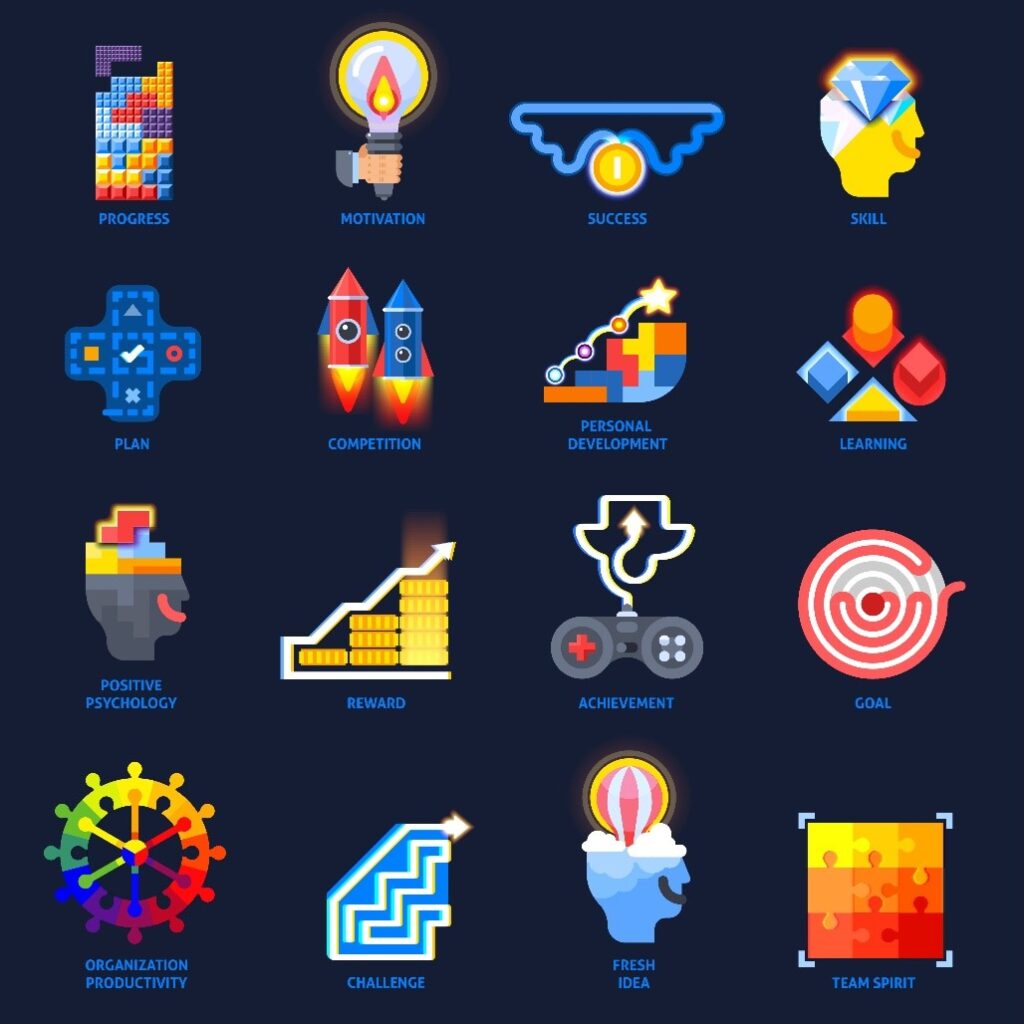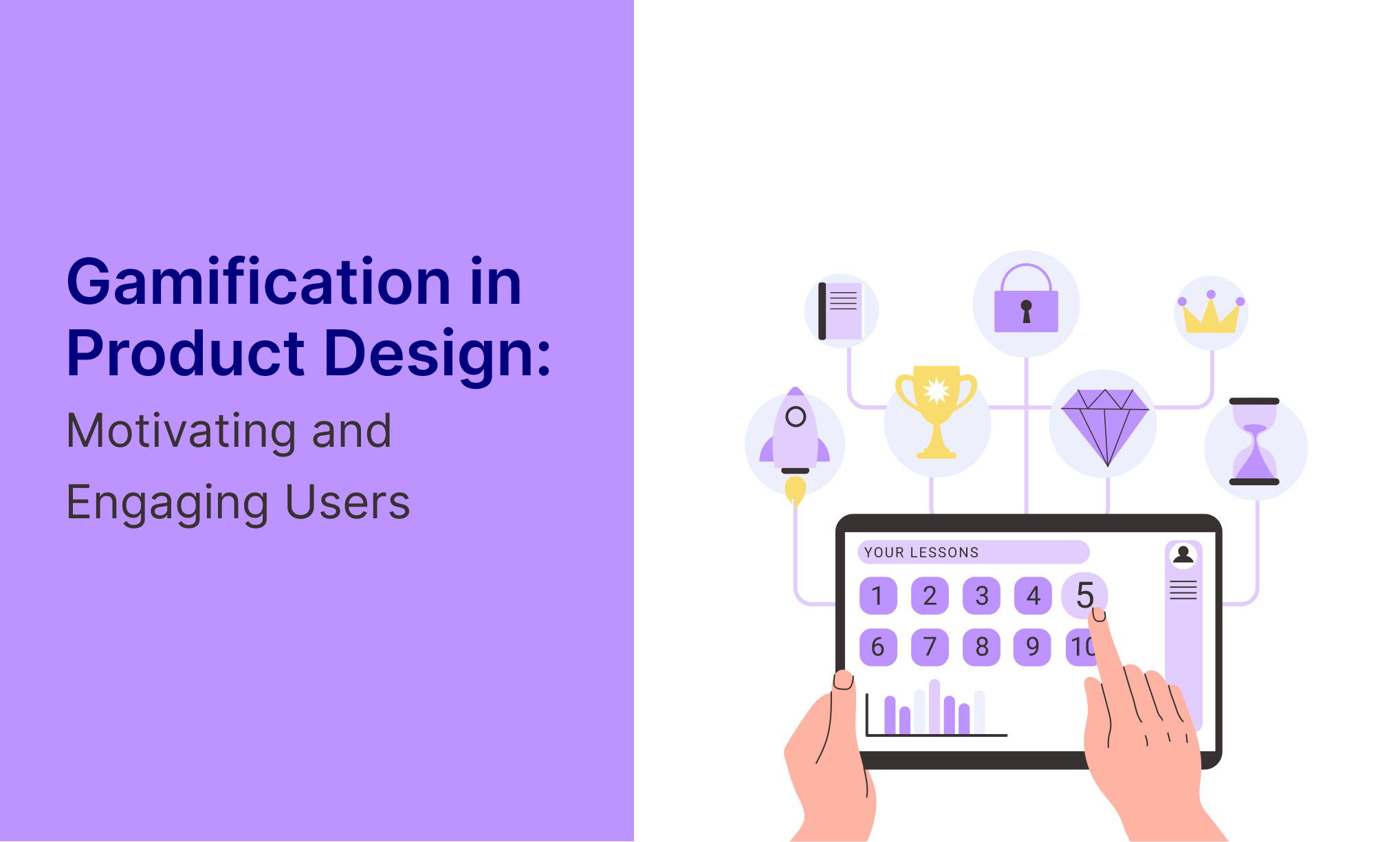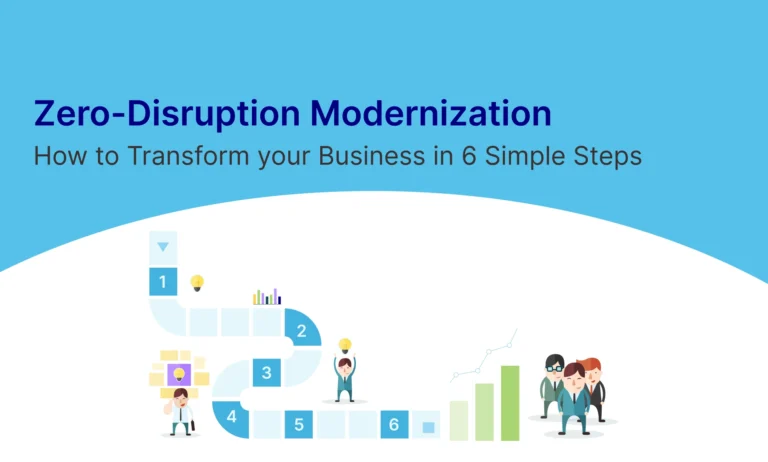Table of Contents
Abstract
Gamification is a key strategy in modern product design, enhancing engagement, motivation, and retention by integrating game mechanics into non-gaming environments. From mobile apps to corporate training, it makes experiences more interactive and enjoyable. This whitepaper covers the basics of gamification, key elements, implementation strategies, benefits, real-world case studies, and challenges businesses should consider when adopting gamification in product design.
Introduction
Gamification refers to the application of game design principles in non-game settings to enhance user engagement and motivation. It leverages human psychology—our natural inclination to seek rewards, overcome challenges, and achieve progress—to create more appealing, interactive, and immersive experiences. By incorporating elements such as points, badges, leaderboards, and challenges, gamification transforms routine tasks into engaging activities, driving users toward desired actions.
Both intrinsic and extrinsic motivators play a crucial role in gamification. Intrinsic motivation stems from personal satisfaction and enjoyment, while extrinsic motivation relies on external rewards such as badges, recognition, or prizes. A well-designed gamification system balances these factors, ensuring long-term engagement and sustained participation.

Key Elements of Gamification
Effective gamification relies on the following elements:
- Points & Rewards:
- Points and rewards serve as an immediate form of acknowledgment for user efforts. By tracking and recognizing progress, they create a positive reinforcement loop. Users feel motivated to continue participating when their efforts are rewarded, enhancing long-term engagement.
- Leaderboards:
- Leaderboards create a competitive environment by displaying users’ rankings. This fosters a sense of accomplishment and recognition, while healthy competition motivates users to improve. When users see their progress relative to others, they are driven to stay engaged and strive for higher rankings.
- Challenges & Quests:
- Challenges and quests provide structured goals and a sense of direction. They transform mundane tasks into a more engaging and purposeful experience, driving users to complete them. By offering tangible goals, users are motivated to take on challenges, thus increasing engagement.
- Badges & Achievements:
- Badges and achievements are a form of recognition that celebrate milestones. When users earn these rewards, they feel validated for their efforts, boosting their intrinsic motivation. Achievements not only showcase success but also provide users with visible markers of progress, further reinforcing engagement.
- Progress Tracking:
- Tracking progress offers users a tangible measure of how far they’ve come. A clear visualization of progress, whether through a progress bar, milestones, or goals, allows users to see their journey unfold. This feedback loop enhances motivation by allowing users to feel like they’re making tangible strides toward a goal.
- Social Interaction:
- Social interaction, such as sharing achievements and engaging with peers, builds a sense of community. It encourages collaboration and social bonding, which in turn boosts user engagement. When users feel connected to a community, they are more likely to return to the platform for social interaction and shared achievements.
- Customization & Personalization:
- Customization allows users to tailor their experience, making them feel more invested in the product. Personalization enhances engagement by catering to individual preferences, making the experience more enjoyable and relevant. When users feel their experience is unique to them, they are more likely to engage consistently.
- Feedback & Notifications:
- Real-time feedback and notifications keep users informed about their progress and achievements. Instant feedback, whether positive or constructive, keeps users engaged by providing timely updates. Notifications also remind users of upcoming tasks or rewards, ensuring they stay on track with their goals.
- Storytelling & Narrative:
- A compelling story or narrative adds depth to the user’s experience. When users feel like they’re part of a journey, their emotional investment increases. Storytelling creates an immersive environment where users are motivated to continue progressing to see how the story unfolds, driving engagement.
- Surprise & Mystery Elements:
- Surprises and mystery elements keep users intrigued and excited. Unpredictable rewards, secret challenges, or hidden features add an element of curiosity, encouraging users to explore further. The anticipation of an unexpected reward can drive sustained engagement, as users return to uncover new surprises.
- Levels & Unlockable Content:
- Levels and unlockable content provide users with ongoing goals to achieve. As users advance, they unlock new features, challenges, or rewards, which keeps the experience fresh and exciting. The sense of progression through levels motivates users to continue, as they are constantly working toward new milestones.
- Time-Based Challenges:
- Time-based challenges introduce urgency and excitement. The limited time frame encourages users to act quickly, increasing engagement during specific events. These challenges can drive users to return regularly to participate in new events, thus keeping the experience dynamic and engaging.

Strategies for Implementing Gamification
To successfully integrate gamification into product design, consider the following strategies:

Gamification offers numerous advantages, including:
- Increased Engagement: Interactive experiences keep users actively participating.
- Enhanced Motivation: Reward systems and challenges stimulate users to complete tasks.
- User Retention: Gamification fosters long-term user loyalty and continued interaction.
- Improved Learning & Productivity: Game mechanics can facilitate skill development and task completion.
- Data-Driven Insights: Tracking user behavior allows businesses to refine strategies for better engagement.
Successful Case Studies
Several companies have successfully leveraged gamification to enhance user experiences and drive engagement:
- Duolingo
- The language-learning platform engages users with points, streaks, and a leaderboard that adds a competitive element. These mechanics encourage consistency, helping users stay committed to their learning goals.
- Starbucks
- Through its Starbucks Rewards program, customers earn “Stars” for purchases, which can be redeemed for free drinks and food. This system fosters brand loyalty and incentivizes repeat business.
- Nike Run Club
- This fitness app motivates users through achievements, badges, and progress tracking. It also encourages participation in weekly and monthly challenges, making exercise more engaging and goal driven.
- Audible
- Audible enhances user engagement through “Listening Levels” and unique badges such as the “Night Owl” for late-night listeners. These features gamify the audiobook experience, adding fun and competition to the platform.
- Todoist
- Todoist enhances task management with a gamified “Karma” system. Users earn positive karma points for completing tasks on time and lose points for delays. Progressing through levels—from Beginner to Enlightened—creates a sense of achievement. The ability to share scores on social media adds a competitive edge, driving productivity.
- Fitbit
- Fitbit integrates gamification into health tracking by allowing users to set step, weight, and fitness goals. Features like progress tracking, badges, challenges, and leaderboards encourage consistency. Social elements, such as group challenges and real-time notifications, add motivation, making fitness engaging and rewarding.
Challenges and Considerations
While gamification has many benefits, it must be implemented thoughtfully. Common challenges include:
- Superficial Engagement: Poorly designed rewards may generate short-term excitement but fail to sustain long-term interest.
- Over-Competitiveness: Excessive competition can discourage certain users, especially those who prefer collaborative environments.
- Fatigue and Burnout: Overuse of gamification elements can lead to disengagement if users feel pressured or overwhelmed.
- Ethical Concerns: Transparency in rewards, fairness in competition, and avoiding manipulative tactics are essential to maintaining user trust.
Conclusion
Gamification is a transformative approach to product design that enhances user engagement, motivation, and retention. By incorporating well-structured game mechanics, businesses can create immersive experiences that drive user interaction and long-term loyalty. However, successful implementation requires careful planning, user-centric design, and continuous optimization to ensure a sustainable and rewarding experience.
By aligning gamification with business objectives, understanding user psychology, and implementing engaging game elements, organizations can build compelling digital experiences that stand out in today’s competitive market.








